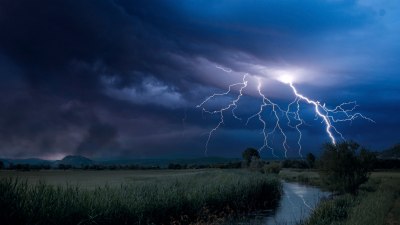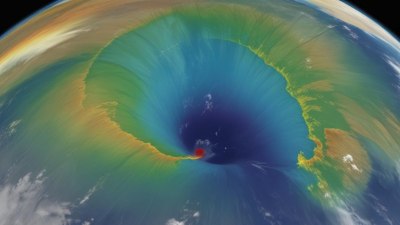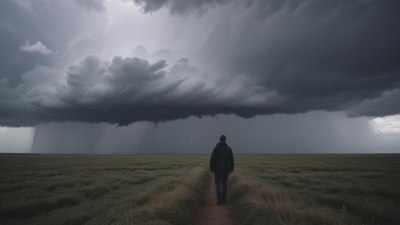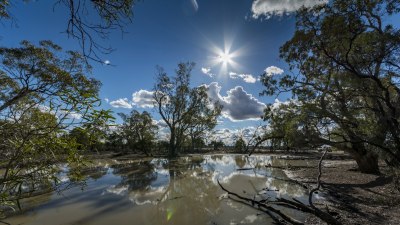How Hurricanes Create Lightning Shows You Never See on Land
Discover the fascinating connection between hurricanes and lightning, revealing unseen spectacles during storms.

When hurricanes approach land, they bring with them not only strong winds and heavy rains but also a dazzling light show that often goes unnoticed. While people scramble for safety and prepare for storm impacts, the true beauty of nature’s ferocity unfolds in the skies. This article delves into how hurricanes create these spectacular lightning displays and explains phenomena that rarely occur in our everyday experiences.
Hurricanes are intense tropical storms characterized by low pressure, high winds, and significant moisture. As they form over warm ocean waters, the intricate dynamics involved can produce an incredible amount of electrical activity. The ingredients necessary for lightning production can often be found in turbulent weather, where rising warm air meets colder air at higher altitudes.
The Science Behind Lightning
To understand how hurricanes create lightning, we need to explore the science behind this electrifying phenomenon. Lightning is a discharge of electricity that occurs when differences in electrical charges accumulate in storm clouds. A typical thunderstorm has both positive and negative charges, where ice crystals inside the cloud collide, leading to charge separation. As the clouds build upward, charged particles are distributed, creating an electric field large enough to cause a discharge — which we recognize as lightning.
In hurricanes, the vast size and energy of the storm enhance this charge buildup. Hurricanes are enormous, spanning hundreds of miles, and as they swirl, they create an ideal environment for electrical charges to accumulate. The interaction of warm moist air rising rapidly, combined with cooler air descending at high altitudes, intensifies these collisions, increasing the likelihood of lightning strikes.
Hurricanes: A Lightning Hotspot
Interestingly, hurricanes produce a specific type of lightning known as 'flash lightning,' which can occur both within the storm and around its edges. Flash lightning is characterized by its bright, short duration, unlike the longer-lasting strikes sometimes seen in typical thunderstorms. Researchers have found that the intense updrafts generated by hurricanes enable the rapid movement of ice particles that further contribute to charge separation.
Data collected from satellite imagery during hurricane formations shows that these storms can produce thousands of lightning strikes over a relatively short period. For example, when Hurricane Patricia made landfall in 2015, it generated more than 8,000 lightning strikes just within 24 hours!
The Role of the Eye and Eyewall
The structure of a hurricane plays a critical role in the amount of lightning it generates. The eye of the hurricane is a calm region at its center, surrounded by the eyewall — the area with the most intense winds and thunderstorms. This is where the majority of lightning strikes occur. The eyewall's towering thunderstorms are extremely conducive to lightning development due to the rapid rise of warm, moist air combined with the downward flow of colder air around it.
As the storm rotates, the eyewall's convection process acts like a giant engine, continuously feeding the warm air needed to sustain the storm and its lightning production. This dynamic cycle keeps lightning rates high, especially during the peak intensity of the hurricane's activity.
Investigating the Differences: Land vs. Ocean
The visual spectacle of lightning in hurricanes isn't just about raw numbers; the setting makes a significant difference as well. When hurricanes are over water, there are fewer physical barriers preventing observers from witnessing these incredible light shows. The open ocean offers a clear view, where the horizon can catch the flash of a lightning bolt. However, when these storms make landfall, observations become more limited due to cloud cover, buildings, and tree lines blocking the view.
Moreover, the conditions over the ocean, particularly the warm water, allow hurricanes to intensify and maintain their energy, while they generally weaken once they move over land. This means that many lightning displays associated with hurricanes may happen hours or days before they strike land, leaving coastal residents unaware of the dazzling show taking place above.
Observing Lightning in Hurricanes
Many people may wonder if there is any safe way to observe these lightning shows from land. The answer lies in storm tracking and advanced weather technology. Meteorologists and researchers utilize radar, satellites, and lightning detection systems to monitor storms and analyze lightning strikes.
While field studies and observation stations sometimes exist close to coastlines, receiving real-time updates about lightning activity can help those on land prepare and potentially witness an impressive show without being in the eye of danger. Technologies such as mobile apps provide a direct means of observing storm movements and associated lightning risks. However, safety should always be prioritized; while it may be tempting to watch from a distance, personal safety should never be compromised in the face of a hurricane.
The Aesthetic Appeal of Hurricane Lightning
The aesthetics of lightning during hurricanes are often overlooked due to the chaos of accompanying strong winds and rain. However, stunning imagery of the sky illuminated by flashes of lightning paints a captivating picture. The interplay of colors, from bright white to purple and blue hues, creates a dramatic backdrop that can be mesmerizing.
Photographers and storm chasers are particularly drawn to capturing lightning in hurricanes. The fleeting moment of a lightning bolt can create stunning artwork that celebrates the power and beauty of nature. While these photographs usually come from safe distances or aerial shots taken from helicopters, they provide a glimpse into the extraordinary behavior of lightning when coupled with such massive storm systems.
A Marvel of Nature
In conclusion, hurricanes are not just destructive forces; they are also creators of breathtaking lightning spectacles that illuminate the skies and offer a deeper understanding of meteorological phenomena. The unique conditions present in hurricanes allow for the formation of remarkable lightning displays rarely seen on land. Though often overshadowed by the storm's destructive elements, the beauty born from the chaos deserves appreciation.
As more research is conducted into hurricane behavior and lightning production, we gain insights that can contribute to better forecasting and tracking methods. Understanding these storms enhances our awareness of both their destructiveness and their ability to create natural light shows that remind us of the power and complexity of nature.











